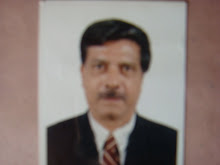




The Colorful Cultural life of the tribal people of Bangladesh also plays an important part in the Cultural life of Bangladesh.
The picturesque hill ranges of their peripheral regions on the north -east, east and south-east, ordering Mymensingh ,Sylhet,and Chittagong Hill tracts are inhabited by a number of tribal people, whose culture and way of life are as varied and colorful as the natural beauty of our land.Dress,ornaments,tools and weapons ,rituals,customs,traditions and crafts are sharply different from the people of the plains. No cogent history, but some legends, is to be found about any of the quasi-tribal groups living at present in Bangladesh. According to the legend a, still in current, each appear to be a sub-segment of a nomadic tribe who prowled in the neighboring lands for their sustance in the hoary past and ultimately wended its way into naturally forlorn lurking pockets of Bangladesh following incessant feud for either land or leadership. This supposition may be held to be correct for the Northerners as well as east-enders only since we have definite proof that the Westerners were brought as immigrants by different colonial peers
From Santalparganah, Nagpur and Ranchi of India in the late-medieval period. Whatever may be the case, they are now sharing Bangladeshi nationhood at full length.But,they are gradually forgetting their hereditary style of life with the fast expanding urbanization.
Therefore, the Government of Bangladesh now maintains five Tribal Cultural Institutes and an ETHNOLOGICAL MUSEUM across the country with a view to make the future generation informed about the different issues of their traditional phenomena. Even the National Museum of Bangladesh also has one more galleries to serve the the same purpose.
And since these tribal peoples yet retain their distinctiveness and appear to have little advanced from the Neolithic primitive social pattern of life. These we can call our most important INTANGIBLE CULTURAL HERITAGE.
Among these hill people by far the largest population lives in the Chittagong Hill-Tracts, which indeed is the only predominantly tribal district in Bangladesh. These tribal people of Bangladesh live in this region on the fringe of Civilization in comparative isolation.
We the modern and common people of the plain have very little knowledge the colorful life of our Hill tribes, which indeed is a separate world in capsuled from our Modern Society.
At this stage of life however, it is very difficult to assess how long they can resist the pace of gradual Modernization /industrialization into their Hills. In the long run it is inevitable that their distinctive way of life, customs, dress, ornaments, and arts and crafts will disappear with the passage of time. It is needless to argue here if it would be form their benefit or it would result in precipitating a cultural Tragedy




















